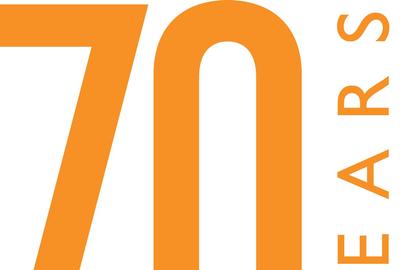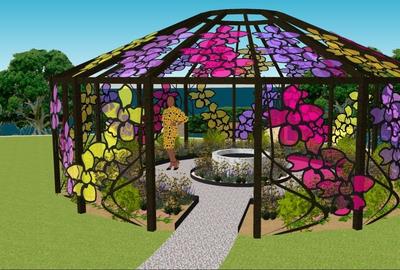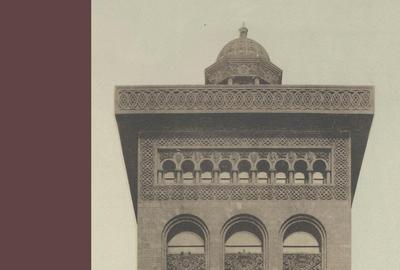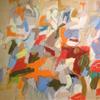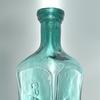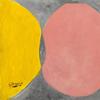Explore the Process of Restoring an 18th-Century Town in a New Exhibition Opening at the Art Museums of Colonial Williamsburg
- WILLIAMSBURG, Virginia
- /
- March 14, 2022
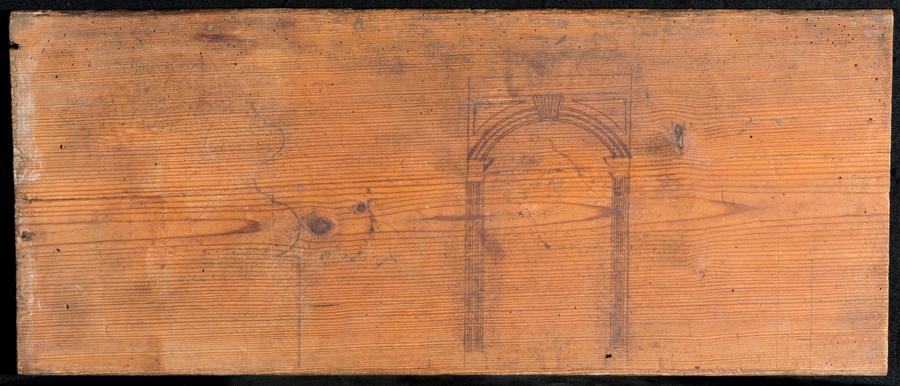
Decades ago a simple wooden board in use as a shelf was discovered in Belle Farm, an 18th-century house in Gloucester County, Virginia. It turned out to be much more than an untrained eye would notice at first glance: etched into the surface was the original design for two arches that are still to be seen in the house today. This extraordinary artifact provided Colonial Williamsburg’s architectural historians with valuable information on design development and layout in the last half of the 1700s. The design was later used as the model for the arches in the southwest dining room of the reconstructed King’s Arms Tavern on Colonial Williamsburg’s Duke of Gloucester Street. This etched board is one of approximately 80 objects that will be on view in Restoring Williamsburg, a new exhibition in the James Boswell and Christopher Caracci Gallery at the DeWitt Wallace Decorative Arts Museum, one of the recently expanded Art Museums of Colonial Williamsburg. Opening on April 30, 2022, the exhibition will reveal how architectural historians and preservationists know what they know and do what they do. Through extremely rare objects and artifacts from the Colonial Williamsburg architectural collection, visitors will gain insights into the restoration and preservation work undertaken since the 1920s at the largest living history museum in the world and offer valuable clues to enhance their exploration of the Historic Area. Restoring Williamsburg will remain on view through December 2024.
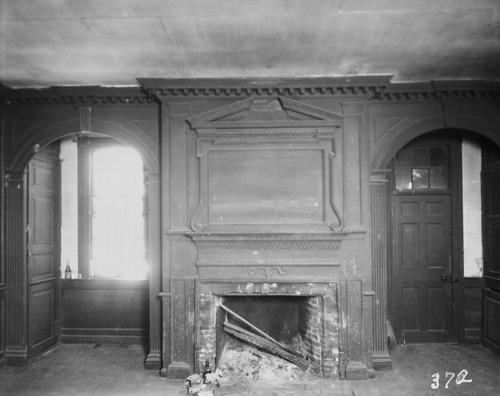
“The art and science of accurately restoring original 18th-century buildings and meticulously recreating lost structures had their geneses at Colonial Williamsburg in the 1920s,” said Ronald L. Hurst, the Foundation’s vice president for museums, preservation, and historic resources. “As we enter the institutions 96th year, this is an exciting opportunity to reflect on the astonishing accomplishments of generations of Foundation scholars and tradespeople.”
Among the earliest and rarest surviving architectural elements from Williamsburg to be seen in Restoring Williamsburg is a ca.1695 scuttle door from the Nelson-Galt House on Francis Street (shown at left top), which served as an access hatch for the attic space. Its detailing includes foliated hinges and molded battens, typical of Williamsburg-area buildings in the 17th and early 18th centuries. Another extremely rare object appearing in the exhibition is a well-preserved 17th-century leaded casement window from Massachusetts (shown at bottom left). Such early windows were still to be found in Williamsburg as late as the 1760s. Archaeological excavations are the source of most information about the use of casement windows in Williamsburg. For example, the turned leads excavated at the site of Charlton’s Coffeehouse were used to guide the design of the casement windows now seen in the building’s cellar. The discovery of an iron staple in the foundations proved the location of what was by then a very old-fashioned window form.
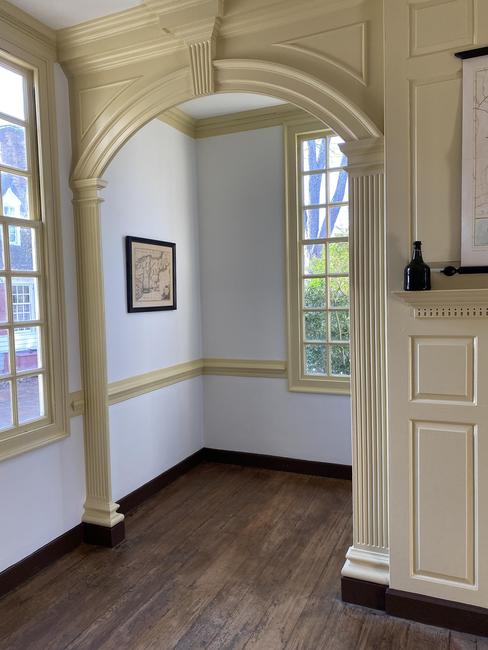
“The architectural elements in the exhibition offer a snapshot of our collection, which forms the basis for the restoration and preservation work undertaken here at Colonial Williamsburg. They not only provide us actual 18th-century profiles, colors, and materials, but help further our understanding of Williamsburg’s 18th-century built environment,” said Dani Jaworski, Colonial Williamsburg’s manager of architectural collections.
Colonial Williamsburg’s ongoing restoration process frequently causes the architectural preservation team to reevaluate their understanding of individual buildings. One of the best examples of this process is illustrated by an overmantel painting of a landscape scene, originally installed in the 18th-century George Reid House. In order to try to date the painting, the team decided to restudy the building itself. Surprisingly, they discovered that the earliest section likely dates to the 1710s, making it the oldest surviving domestic structure on Duke of Gloucester Street. The new exhibition will show not only a rare paint-decorated panel, but explain how paint analysis, conservation, documentary research and architectural investigation combined to update both the historical record and the physical appearance of an original Historic Area building.
Restoring Williamsburg is generously funded by Thomas L. and Nancy S. Baker.
For anyone fascinated by architectural preservation and those who plan on visiting Colonial Williamsburg’s Historic Area, Restoring Williamsburg is a must-see exhibition.
Protecting the health and safety of guests, employees and the local community has been one of Colonial Williamsburg’s highest priorities through the COVID-19 pandemic. Following the guidance of the Centers for Disease Control and Prevention (CDC) issued Feb. 25, Colonial Williamsburg no longer requires guests to wear masks during their visit. Please note that the Federal Transportation Security Administration still requires masks for passengers on all buses including Colonial Williamsburg shuttle buses. The foundation’s latest COVID-19 health and safety policies are available at colonialwilliamsburg.org.
Additional information about the Art Museums and Colonial Williamsburg as well as tickets are available online at colonialwilliamsburg.org, by calling (855) 296-6627 and by following Colonial Williamsburg on Facebook and @colonialwmsburg on Twitter and Instagram.
About the Art Museums of Colonial Williamsburg
The Art Museums of Colonial Williamsburg include the Abby Aldrich Rockefeller Folk Art Museum and the DeWitt Wallace Decorative Arts Museum, both of which are housed in their newly expanded building that offers an additional 65,000-square-feet of space, 25-percent more gallery space and numerous enhancements to the visitor experience. The Abby Aldrich Rockefeller Folk Art Museum is home to the nation’s premier collection of American folk art, with more than 7,000 folk art objects made up to the present day. The DeWitt Wallace Decorative Arts Museum exhibits the best in British and American fine and decorative arts from 1670–1840. The Art Museums of Colonial Williamsburg are located at 301 South Nassau Street in Williamsburg, Va. Open daily from 9:00 A.M. to 6:00 P.M.
About The Colonial Williamsburg Foundation
Colonial Williamsburg operates the world’s largest living history museum, preserving Virginia’s 18th-century capital as a fully functioning city. Fun, engaging experiences transport guests back in time and highlight the relevance of America’s founding era to contemporary life. The Colonial Williamsburg experience includes more than 600 restored or reconstructed buildings, historic trade shops, renowned museums of decorative arts and folk art, extensive educational outreach programs for students and teachers, lodging, culinary options from historic taverns to casual or elegant dining, the Golden Horseshoe Golf Club featuring 45 holes designed by Robert Trent Jones Sr. and his son Rees Jones, a full-service spa and fitness center managed by Trilogy Spa, pools, retail stores and gardens. Philanthropic support and revenue from admissions, products and hospitality operations sustain Colonial Williamsburg’s educational programs and preservation initiatives. The Colonial Williamsburg Foundation is a 501 (c)(3) nonprofit organization; philanthropic support and revenue from admissions, products and operations sustain its educational programs and preservation initiatives.
# # #
Contact:
Robyn LiverantRobyn Liverant Public Relations
robyn@robynliverant.com

270x400_c.jpg)
